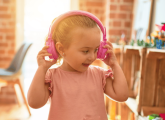Barbara Isaacs explains how promoting good hygiene can benefit children’s development across the EYFS…
It was Montessori’s aim, as early as 1907, to encourage children’s autonomy by supporting their fierce drive for independence. She made clear links between autonomy and a child’s positive self-image and self-esteem. All parents, practitioners and teachers have seen the intense pride and sense of achievement when two- and three-year-olds manage to put on their shoes, serve their own snack or manage to complete an activity successfully. These accomplishments are possible because we show children how to go about managing such tasks and give them time to become competent. Their initial steps are often clumsy and inefficient, but practice makes perfect! Once they can do it for themselves, young children often offer help to their friends and those who may be struggling. Their self-esteem is enhanced further by making these social connections and promoting a sense of belonging and wellbeing within the group.
Montessori started by making sure that children established good habits of hygiene, by demonstrating how to wash themselves thoroughly and how to use the toilet independently. Even today, we need to show children how to wash and dry their hands, particularly after painting or a craft activity or gardening as well as before and after meals or following a visit to the toilet. In such situations they may need to brush the dirt from behind their nails and ensure that their wrists are clean too. Many settings find hand-washing a challenge because they are located in church halls, with limited access to running water. However, it is possible to set up a hand-washing activity in the classroom. This will involve having two small buckets, a jug, small bowl and soap dispenser and a small nail brush, and paper towels for hand-drying.
One bucket (with a lid) will be partly filled with warm water and will have a jug inside. Children who need to wash their hands must fill the hand-washing bowl with the jug. They will also need to learn how to access the soap from the dispenser and how to rub their hands together to make lather, and ensure that they wash their fingers carefully, checking their nails for dirt. Whilst purposeful, hand-washing gives two- and three-year-olds a great deal of pleasure, and it can be a drawn-out process. When finished, children are expected to pour the used water into the second bucket and wipe out the bowl in readiness for the next person.
Just think what skills and learning take place during this simple activity. Children will need to remember the sequence. They will improve their hand-eye coordination and estimation during the pouring activity. They will grow in their awareness of their own body whilst being reminded of the need for personal hygiene. Finally, their sense of self within the group will also increase.
You may not want to have permanent access to hand-washing as described here, as it can occasionally end up with much spillage, but you may want to try it out when doing finger painting, printing and other activities within the art area.
Another element of personal hygiene that can challenge the practitioner is children’s ability to blow their nose. Why not try having a box of tissues, a smallish wall-mounted mirror and a rubbish bin available in close proximity? A child can then be encouraged to blow their nose, check that they have managed the task properly and dispose of the tissue in the bin provided. Young children will need to be shown how to blow their nose and be reminded about checking if they have wiped their nose properly – but once successful, they have gained a skill for life!
This is just a beginning. Why not try to develop a routine for brushing teeth after lunch, or if you have the space, for each child having their own hair brush for use first thing or after naps?
Barbara Isaacs is the academic director of Montessori Centre International.

Outdoor maths – Eco-friendly ideas for cold days
Editors picks

Audio resources – How to use them in Early Years
Editors picks
